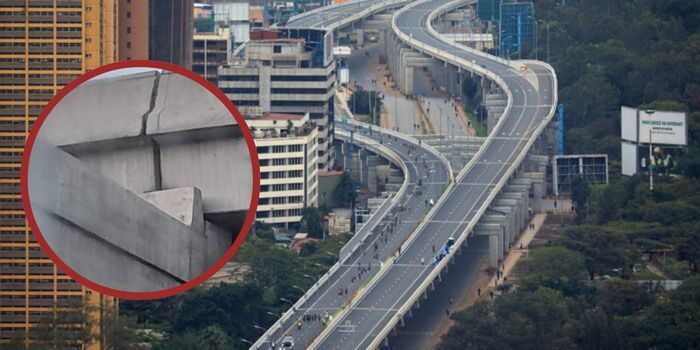The MOJA Expressway Company has firmly dismissed claims circulating online that a section of the Nairobi Expressway had started to develop cracks, particularly near the Haile Selassie entrance.
In a statement issued on Wednesday, September 10, the firm—responsible for operating and maintaining the 27-kilometre toll road—assured motorists that the highway remains in excellent condition.
They emphasized that there were no structural cracks and that the road continues to meet the highest safety standards.
“We want to reassure all road users that the Nairobi Expressway is in perfect shape, with no structural cracks whatsoever.
The durability of the road is backed by high-quality initial construction, our ongoing maintenance work, and frequent safety audits. Motorists can rest assured of their safety while using the road,” MOJA Expressway stated.
The company’s response came after a photo went viral on social media, showing what appeared to be a massive crack on the expressway at the Haile Selassie entrance.
The image, captioned as proof of damage on the “luxurious expressway,” was later revealed to be digitally altered, sparking unnecessary panic among Kenyans.
The Nairobi Expressway, which links Jomo Kenyatta International Airport (JKIA) to Westlands, was completed in 2022 by the China Road and Bridge Corporation (CRBC) under a Public-Private Partnership (PPP).
Under the agreement, MOJA Expressway will manage the road for 27 years before eventually handing it over to the Kenyan government.
Interestingly, this is not the first time such alarming claims have surfaced. In 2023, the company was forced to issue a similar clarification after another viral poster—falsely branded as coming from the Daily Nation—claimed a dangerous crack had formed along the road, endangering thousands of motorists.
To counter the misinformation at the time, MOJA Expressway’s Head of Public Relations, Jeanne May, clarified that the reports were completely false and only meant to mislead the public. “Please be advised that the poster doing rounds on social media is fake and misleading.
Daily traffic on the expressway has grown significantly, from an average of 50,000 vehicles to between 65,000 and 70,000 daily. This clearly shows the road is safe and heavily relied upon,” May explained.
The company stressed that while social media is a powerful tool for communication, it has also become a platform for spreading misinformation that can cause unnecessary fear among the public.
They urged Kenyans to rely on official communication channels for accurate updates about the expressway.
Join Government Official WhatsApp Channel To Stay Updated On time
https://whatsapp.com/channel/0029VaWT5gSGufImU8R0DO30


